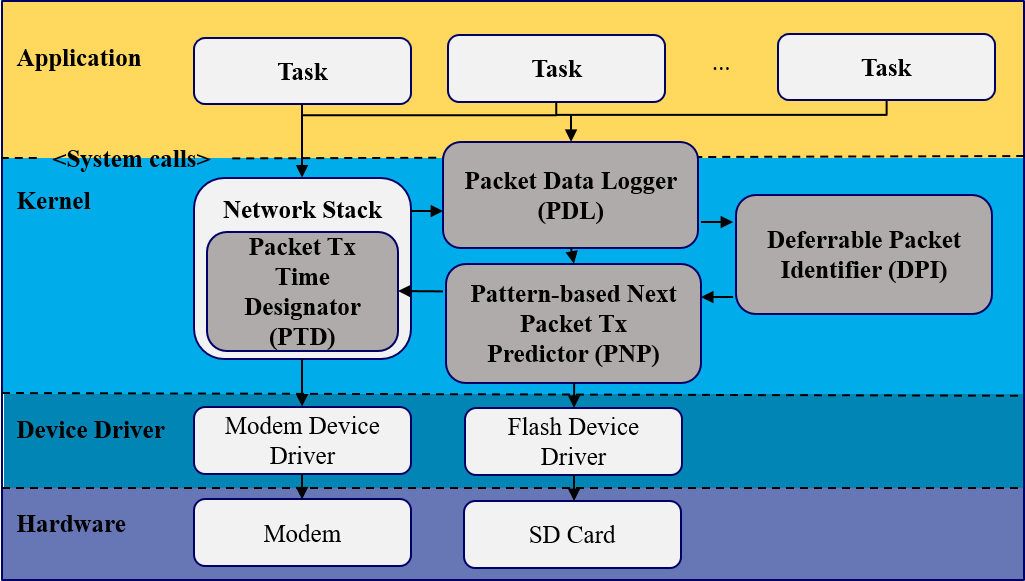Reducing energy consumption of a modem via selective packet transmission delaying
The radio resource control (RRC) protocol is mainly composed of two parts. When a modem attempts to transmit a packet, it should first acquire the radio resources from the base station by using the RRC protocol. This is called promotion. After the completion of the packet transmission, a modem releases the radio resources. This is called demotion. However, if a modem performs both promotion and demotion whenever a packet is transmitted, the modem and the base station surely suffer overhead. In order to reduce this overhead, the RRC protocol delays the radio resource release process for a predefined time interval after completing the packet transmission while anticipating a subsequent packet transmission request. This time interval is referred to as the tail time.
The tail time often has a great impact on the amount of energy consumed to transmit a given amount of data. In the case of burst packet transmissions where multiple packets are transmitted within a short period of time, the tail time effectively reduces such overhead by avoiding repetitive radio resource acquisition and release. On the other hand, when there is no packet transmission request within the tail time, the modem wastes energy by unnecessarily holding the radio resources during the tail time. The amount of energy wasted comprises up to 60% of the modem’s energy consumption [1].

The RRC state machine and power consumption in each state

The RRC state machine and power consumption in each state
In order to rectify this problem, we propose a new packet transmission delaying mechanism that selectively delays the transmissions of deferrable packets only if such delays are expected to accrue energy savings. In order to assess the energy savings, we propose an estimated energy gain model that captures the modems energy consumption to transmit a currently requested packet by taking into account the modems exact radio resource usage. Our mechanism consists of three key components: (1) deferrable packet identifier, (2) pattern-based next packet transmission predictor and (3) packet transmission time designator. The first component checks to see if the requested packet is deferrable. The second component derives the patterns of the packet transmission requests and predicts the next packet transmission request time of a mobile device using these patterns. The last component computes the energy savings that can be achieved by delaying the transmission of the currently requested packet using the estimated energy gain model. It then determines the transmission time of the packet.

Overall architecture of the selective packet transmission delaying mechanism

Overall architecture of the selective packet transmission delaying mechanism
References
[1] N. Balasubramanian, A. Balasubramanian, and A. Venkataramani, “Energy consumption in mobile phones: a measurement study and implications for network applications,” Proceedings of the 9th ACM SIGCOMM conference on Internet measurement conference, 2009.